Are people more willing to have a conversation about end-of-life planning today than they were in the 1980s? That was Jeanne McCusker’s opening question as she interviewed me for her weekly program, “A Graceful Life.” What was I to say?
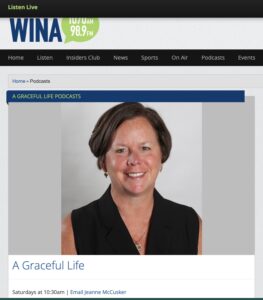
Jean McCusker, host of “A Graceful Life”
I had to admit, “Not much has changed.”
Why? Why, in almost 40 years, has not much changed about end-of-life conversations?
Dying is very personal. You only die once. Although you may get some experience making healthcare decisions for others, like your parents, that is still limited experience. Every end of life is unique. We may have made great strides toward facilitating more peaceful deaths, but each person still faces their death anew.
Hospice and advance directives have not guaranteed peaceful deaths
I do think healthcare professionals and healthcare systems are better today. Take hospice, for example. Medicare started the hospice benefit in 1982. Since then, hospices have grown exponentially. Now, almost everyone knows stories of good hospice deaths. About half of the people who die on Medicare receive hospice care.
Sadly, if you dig down into those numbers, over one-quarter of those on hospice were there less than a week. In other words, they waited until the “last minute” to receive this vital service. Hospice professionals know it is hard to provide the best comfort-focused end-of-life care in less than a week.
 Another change in the last 40 years has been the increased use of advance directive documents like living wills and durable powers of attorney for healthcare. About half the adult population now has such papers.
Another change in the last 40 years has been the increased use of advance directive documents like living wills and durable powers of attorney for healthcare. About half the adult population now has such papers.
Again, all this paper has not improved how well we die. An important article in JAMA last fall questioned whether the emphasis on these documents has led to improvements in end-of-life care. Healthcare professionals might want to listen to a recent GeriPal podcast on this very topic. Just having a piece of paper does not guarantee a peaceful death.
I came to the end of the interview repeating what I often say, “End-of-life decisions, for patients and families, are mainly emotional and spiritual. The big question is, ‘Can I let go?’” THAT truth has not changed. Letting go and letting be can still be difficult.
________________________________________
Chaplain Hank Dunn is the author of Hard Choices for Loving People: CPR, Feeding Tubes, Palliative Care, Comfort Measures and the Patient with a Serious Illness and Light in the Shadows. Together they have sold over 4 million copies. You can purchase his books at hankdunn.com or on Amazon.


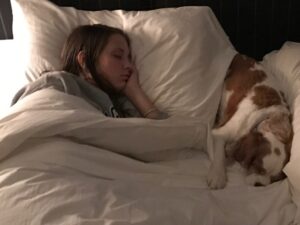 “Charlie” was not a very creative name, but it just seemed to fit a male King Charles Spaniel. At first, we crated him at night. After weeks of barking, he finally settled into his crate and his place at home. Until…
“Charlie” was not a very creative name, but it just seemed to fit a male King Charles Spaniel. At first, we crated him at night. After weeks of barking, he finally settled into his crate and his place at home. Until… Charlie joined Katie in Oxford her second year at Ole Miss, where he supported her during roommate issues and dating cycles. Their deep bond reached new depths. A dog just loves unconditionally.
Charlie joined Katie in Oxford her second year at Ole Miss, where he supported her during roommate issues and dating cycles. Their deep bond reached new depths. A dog just loves unconditionally.

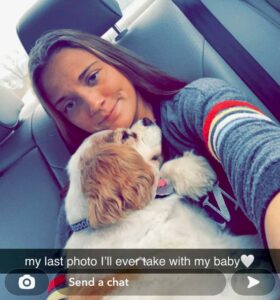 On Sunday afternoon, my wife and I were pulling into the Walmart parking lot, and she blurted out, “Katie has to come home tonight.” It was a mother’s flash of insight for her soon-to-be grieving daughter. She called Katie and told her to get to National airport and get on a plane. I picked her up in Memphis with Charlie a few hours later. They slept together on our bedroom floor that night before she returned to D.C., Monday. In the car on the way to the Memphis airport, she “Snapped” a photo to friends, “my last photo I’ll ever take with my baby.” Indeed, it was.
On Sunday afternoon, my wife and I were pulling into the Walmart parking lot, and she blurted out, “Katie has to come home tonight.” It was a mother’s flash of insight for her soon-to-be grieving daughter. She called Katie and told her to get to National airport and get on a plane. I picked her up in Memphis with Charlie a few hours later. They slept together on our bedroom floor that night before she returned to D.C., Monday. In the car on the way to the Memphis airport, she “Snapped” a photo to friends, “my last photo I’ll ever take with my baby.” Indeed, it was.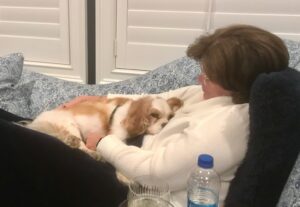
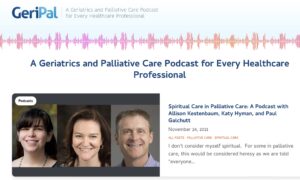 A
A 
